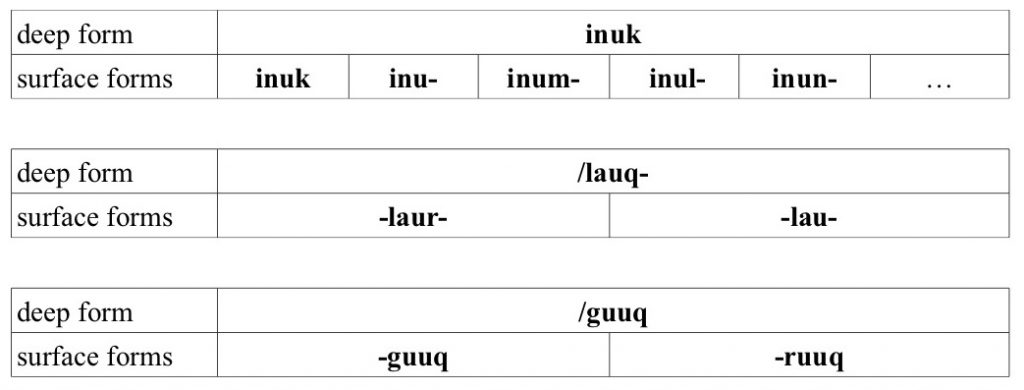Rule #11
Before moving forward, we need to explain what the deep form of chunks is.
When a chunk occurs in a given word, it has a concrete form called its surface form. The surface form of a chunk often varies depending on words.
Compare the words inuit, inuilli and inuiguuq. These words have the same noun ending, but the surface form of this ending is:
- –it in inuit
- –il– in inuillu
- –i– in inuiguuq
The deep (or underlying) form of a chunk is the abstract form a chunk is postulated to have before occurring in a word.
In our example, the deep form of the ending is /it (the reason for the slash symbol is explained below), and the surface forms of /it are –it, –il–, and –i–.
Inside other words, the ending /it can display other surface forms.
Examples
- –t in qallunaat,
- –l– in qallunaallu
- Ø in qallunaaguuq.
Bases, postbases and other chunks also have deep forms and surface forms:

Of course, we need to know how a deep form is changed into a surface form.

